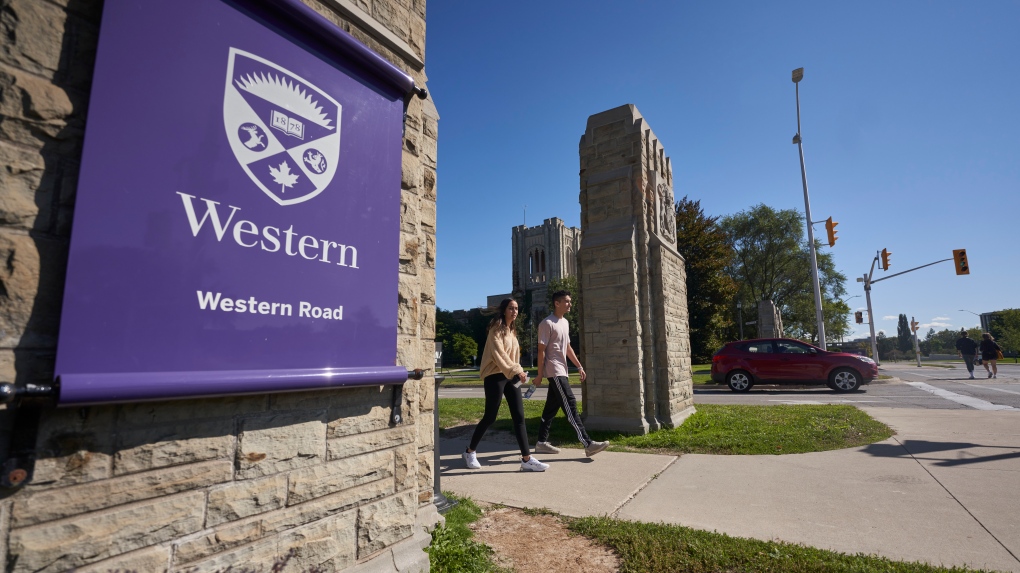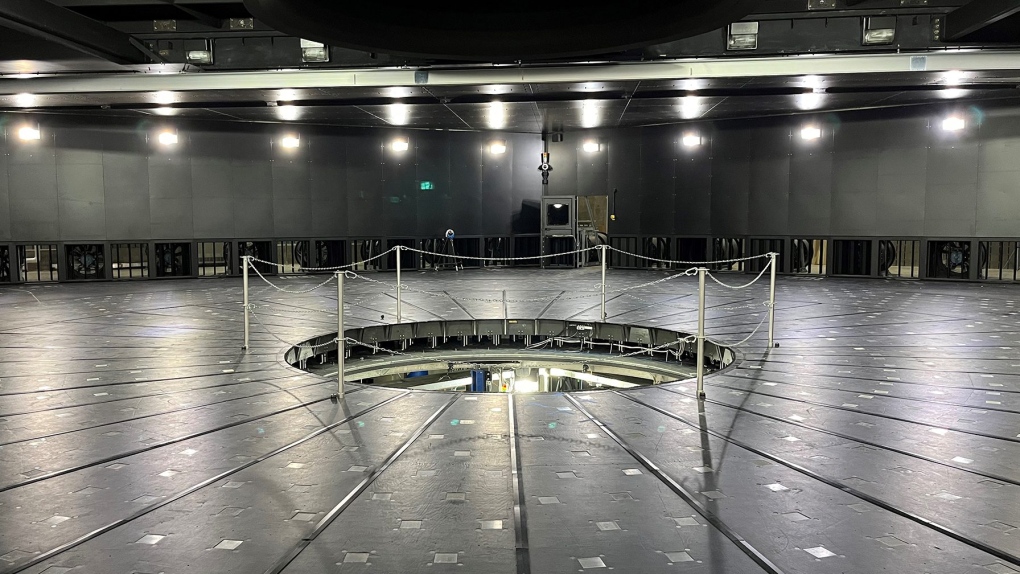Western receives $3.9 million investment for its wind testing facility
 Students walk across campus at Western University in London, Ont., Saturday, Sept. 19, 2020. (THE CANADIAN PRESS/Geoff Robins)
Students walk across campus at Western University in London, Ont., Saturday, Sept. 19, 2020. (THE CANADIAN PRESS/Geoff Robins)
A facility at Western University that’s capable of generating weather systems such as tornadoes and hurricanes received a large investment from the federal government on Friday.
According to a press release issued by Western University, Minister of Innovation, Science, and Industry, François-Philippe Champagne, announced a $628 million investment to support 19 research infrastructure projects at 14 institutions across Canada.
Part of that funding included a nearly $3.9 million investment for London, Ont.’s Western University, and a weather testing facility that’s the first-of-its-kind in Canada.
Known as the Wind Engineering, Energy, and Environment (WindEEE) Research Facilities, the WindEEE dome is capable of generating local and large-scale weather systems, such as tornadoes and hurricanes, in a controlled environment.
“This advanced technology allows researchers to test and understand the effects of weather and climate change on infrastructure,” the release says.
 Western University's WindEEE Dome uses 106 real-time controlled fans and hundreds of flow modifiers to give researchers the ability to modify wind patterns and change their direction during a simulation. (Source: Jeff Renaud/Western Communications)For WindEEE Research Facilities Director Girma Bitsuamlak, this facility is the way of the future.
Western University's WindEEE Dome uses 106 real-time controlled fans and hundreds of flow modifiers to give researchers the ability to modify wind patterns and change their direction during a simulation. (Source: Jeff Renaud/Western Communications)For WindEEE Research Facilities Director Girma Bitsuamlak, this facility is the way of the future.
“WindEEE is at the forefront of innovative research, creating new ways of measuring, testing, and finding engineering solutions for evolving challenges in wind and climate engineering. This support will help us maintain our leadership in climate and wind engineering research,” said Bitsuamlak.
Also housed at the WindEEE Facility is a laboratory that tests the structural safety of buildings and bridges, and a separate facility which tests wind loads on full-scale sized homes.
The funding was made possible through the Canada Foundation for Innovation’s (CFI) Major Science Initiative (MSI) Fund, which supports the operation and maintenance needs of research facilities that possess "national importance.”
“The MSI Fund allows WindEEE researchers, like me, the opportunity to achieve a better understanding of wind engineering and the ability to properly serve and service Canadian and international collaborators through various additional partnerships,” said Bitsuamlak.
In a statement Champagne said, “Canadians are placing us on the world stage by making bold discoveries and challenging our world’s most pressing issues to advance our society, well-being, and environment for all to thrive.”
CTVNews.ca Top Stories

Cuban government apologizes to Montreal-area family after delivering wrong body
Cuba's foreign affairs minister has apologized to a Montreal-area family after they were sent the wrong body following the death of a loved one.
What is changing about Canada's capital gains tax and how does it impact me?
The federal government's proposed change to capital gains taxation is expected to increase taxes on investments and mainly affect wealthy Canadians and businesses. Here's what you need to know about the move.
Quebec nurse had to clean up after husband's death in Montreal hospital
On a night she should have been mourning, a nurse from Quebec's Laurentians region says she was forced to clean up her husband after he died at a hospital in Montreal.
'Anything to win': Trudeau says as Poilievre defends meeting protesters
Prime Minister Justin Trudeau is accusing Conservative Leader Pierre Poilievre of welcoming 'the support of conspiracy theorists and extremists,' after the Conservative leader was photographed meeting with protesters, which his office has defended.
Fair in Ontario, flurries in Labrador: Weather systems make for an erratic spring
"It's a bit of a complicated pattern; we've got a lot going on," said Jennifer Smith of the Meteorological Service of Canada in an interview with CTVNews.ca on Wednesday. "[As is] typical with weather, all of these things are related."
Police tangle with students in Texas and California as wave of campus protest against Gaza war grows
Police tangled with student demonstrators in Texas and California while new encampments sprouted Wednesday at Harvard and other colleges as school leaders sought ways to defuse a growing wave of pro-Palestinian protests.
Bank of Canada officials split on when to start cutting interest rates
Members of the Bank of Canada's governing council were split on how long the central bank should wait before it starts cutting interest rates when they met earlier this month.
Northern Ont. lawyer who abandoned clients in child protection cases disbarred
A North Bay, Ont., lawyer who abandoned 15 clients – many of them child protection cases – has lost his licence to practise law.
'My stomach dropped': Winnipeg man speaks out after being criminally harassed following single online date
A Winnipeg man said a single date gone wrong led to years of criminal harassment, false arrests, stress and depression.





























